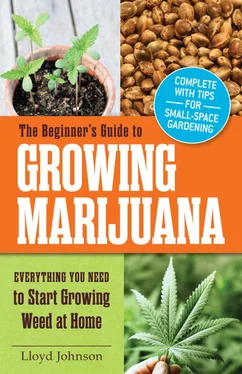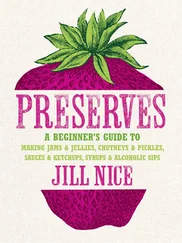Lime for Acidic Soil Control
A good way to stabilize soil pH is to use dolomite lime, or calcium-magnesium carbonate. Dolomite lime acts slowly and continuously, so your soil will remain pH-stable for a few months. It has a pH that is neutral (7.0). When added to soil in the correct proportions, it will stabilize soil at a pH near 7.0.
Use fine-size dolomite lime, as the coarser grades take the plant longer to break down and use; they can take a year or longer to work. Fine-size dolomite lime is readily available at any garden supply center.
For container growing, add one cup of fine dolomite lime to each cubic foot of soil. Mix the dry soil thoroughly with the dolomite lime, water lightly, and then remix. Recheck the pH after two days.
Wood Ash, Oyster Shells, and Eggshells
Small amounts of hardwood ashes or crushed oyster shells or eggshells will help to raise the soil pH. If you use wood ash, make certain it is from a good hardwood like white oak that you have specifically burned for clean ash. Do not use colored paper or chemical fire starters to start your burn.
Eggshells should be organic and finely ground by processing in a clean coffee grinder. The fine grind will make the shell more quickly available to the plants; it takes much longer to break down big chunks of shell. Oyster shells are available already ground at most garden stores. As with eggshell, a fine grind will make the shell easier for the plants to use more quickly.
Even with gentle amendments like eggshell, wait at least a day or two before checking the pH level of soil after attempting to raise, lower, or stabilize it. If adjustments still have to be made, use small amounts and keep testing. It is easier to add to soil than to try to remove amendments.
Bone Meal
Bone meal is made from animal bones (usually cow bones) that are steamed and then ground. It is an excellent source of phosphorus, which helps with cell division and root growth in plants. Bone meal also contains phosphates, usually about 10 percent.
Bone meal is recommended for its controlled-release form of phosphorus. The nutrients are insoluble in water, so the plants slowly convert it to a form that they can use. Cheaper synthetics offer high levels of phosphorus that are more immediately available to plants, but these are not recommended. Super phosphates are made by treating minerals with acid. They can burn your plants and are not considered organic.
Bone meal is available at almost any garden center. It is quite gentle, so you can be fairly generous when you are mixing your soil. Two or three handfuls can be added to a wheelbarrow load of soil or later scratched into the surface of your plant container.
Blood Meal
Blood meal is exactly what it sounds like: slaughterhouses make dried blood as a byproduct. Blood meal is a high-nitrogen organic plant food (approximately 13 percent), and care should be taken not to apply too much. Soil bacteria break down the blood proteins rapidly to make ammonia. The plant roots absorb the ammonia to take up nitrogen, which is useful during the vegetative phase of cannabis, as it adds lots of leafy growth.
Unlike bone meal, blood meal is very acidic, should be used sparingly, and should not be applied to young seedlings. In warm, moist conditions like grow rooms, decomposition can be too rapid, causing ammonia to be released in enough quantity to damage delicate roots.
Blood meal applications last up to four months and should be used with caution: Use no more than four ounces per square yard during the growing or vegetative phase. Growers do use it as an element in tea for their plants; dilution with water makes it less likely to burn tender young plants. It can also be used to kick-start a compost pile that has mostly high-carbon ingredients. Some growers also report success in using it to repel deer, attributing the effect to the blood smell. Blood meal is available at all garden stores.
Bat Guano
Bat guano, or bat feces, is a natural superfertilizer and a favorite with cannabis growers. It contains many necessary macro- and micronutrients, as well as a whole host of beneficial microorganisms that cannot be provided by chemical fertilizers. It is considered to be very high in nitrogen, but this can depend on whether the guano comes from insect-eating bats or fruit-eating bats. Fruit eaters produce guano that is higher in phosphorus.
Guano generally consists of ammonia, along with uric, phosphoric, oxalic, and carbonic acids, some earth salts, and a high concentration of nitrates. It supplies nutrients in these approximate amounts: 9 percent nitrogen, 6 percent phosphorus, and 2 percent potassium.
Unless you have a source for guano, like a convenient bat cave, generally you must purchase it from an organic garden supplier. It can be quite expensive, but is so beneficial it is worth having.
Many growers stretch their guano dollars by making bat guano tea to feed their plants. Use three tablespoons of bat guano to one gallon of water. Premix the tea in a large bucket using warm (but not hot) water. The warm water breaks down the bat pellets much more efficiently than cold and minimizes stirring. Let the tea steep for at least forty-eight hours before feeding to your plants. Although not strictly necessary, an aquarium pump and air stone will dissolve oxygen into the solution and keep the good bacteria alive and thriving. Let it bubble a day or two before you use it. It is best to feed vegetative plants a cupful directly after watering. If you feed before watering, you may flush out all your good bat guano nutrients. A diluted, nonburning mixture for young plants or seedlings can be made with as little as a tablespoon of guano.
Kelp Meal
Kelp meal (1-0-8) is a dry fertilizer made of iron seaweed and is very high in potassium and trace elements. Kelp meal is an excellent organic source of plant hormones that stimulate plant and root growth. Some cannabis growers use a liquid seaweed (4-2-3) mix for a quick boost for greening foliage and roots. Kelp meal is easily available at garden centers or can be ordered online from organic garden suppliers.
Gypsum
While some growers like to use gypsum to break up heavy clay soils, it is preferable to use compost and other less intense methods to gradually improve your soil. Gypsum is calcium sulphate, and it adds calcium in a somewhat soluble form.
Never use gypsum without testing your soil first. Gypsum should not be applied at all where there is a shallow saline water table and no subsurface drainage; after the excess sodium and magnesium are leached down to the water table, the soil’s own capillary action may bring them back to the plants’ root zones. If you feel you must use it, gypsum can be found at garden centers. Be sure to read the directions very carefully.
Worm Castings
Worms are natural soil conditioners. They benefit soil structure by loosening soil and improving aeration and drainage. Lots of earthworms are an excellent indication of healthy soil; if your pH is off, your earthworms will leave. Earthworms should be introduced to compost piles, new beds, and containers whenever possible.
Earthworms derive their nutrition from organic matter in your soil, processing decayed plant parts, decomposing remains of animals, and living organisms like nematodes, protozoans, rotifers, bacteria, and fungi. Earthworms produce their own weight in castings every twenty-four hours. As they digest, many insoluble minerals are converted to a plant-available soluble form, and long-chain molecules such as cellulose are partially broken down by bacteria in the digestive tract. Fresh earthworm casts are several times richer in available nitrogen, available phosphates, and available potash than in the surrounding topsoil. Worm castings also contain many beneficial bacteria and enzymes, making them another favorite of cannabis growers. Most high-end organic potting mixes already contain earthworm castings; check the ingredients when you purchase them, as worm castings are extremely beneficial and useful to your plants.
Читать дальше












